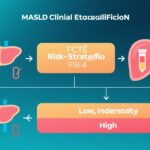Highlights
- Perioperative durvalumab combined with FLOT chemotherapy improved two-year event-free survival (EFS) in resectable gastric and gastroesophageal junction adenocarcinoma.
- Pathological complete response (pCR) rates were significantly higher with durvalumab plus FLOT compared to FLOT alone.
- Safety was similar between groups, with no increase in severe adverse events or treatment delays.
Clinical Background and Disease Burden
Gastric and gastroesophageal junction (GEJ) adenocarcinomas remain a significant global health challenge, ranking among the leading causes of cancer-related mortality. Despite advances in multimodal therapy, including perioperative chemotherapy and surgery, recurrence rates remain substantial, and long-term survival is unsatisfactory. The FLOT regimen (fluorouracil, leucovorin, oxaliplatin, and docetaxel) is established as the perioperative standard for resectable disease, but outcomes still leave considerable room for improvement. Immunotherapy, particularly immune checkpoint inhibitors, has transformed the management of advanced gastric cancer. However, its role in earlier, potentially curable stages has been less clear, with ongoing research into synergy with chemotherapy in the perioperative setting.
Research Methodology
The MATTERHORN trial (NCT04592913) is a phase 3, multinational, double-blind, randomized controlled study evaluating the efficacy and safety of perioperative durvalumab, an anti-PD-L1 antibody, in combination with the FLOT regimen compared to FLOT plus placebo in patients with resectable gastric or GEJ adenocarcinoma. A total of 948 participants were randomized 1:1 to either durvalumab (1500 mg every 4 weeks) or placebo, both combined with four cycles of FLOT (two neoadjuvant and two adjuvant), followed by an additional ten cycles of durvalumab or placebo every four weeks postoperatively. The primary endpoint was event-free survival (EFS). Key secondary endpoints included overall survival (OS) and pathological complete response (pCR).
Key Findings
After a median follow-up of 31.5 months, the durvalumab plus FLOT arm demonstrated a significant improvement in EFS versus FLOT alone: two-year EFS rates were 67.4% with durvalumab versus 58.5% for placebo (hazard ratio [HR] for event or death: 0.71; 95% CI, 0.58–0.86; P<0.001). This represents an absolute improvement of nearly 9% in two-year EFS.
Two-year OS was numerically higher with durvalumab (75.7% vs. 70.4%), with a stratified log-rank P value of 0.03—statistically significant, but not exceeding the stringent prespecified significance threshold (P<0.0001). Notably, the HR for death was 0.99 (95% CI, 0.70–1.39) in the first 12 months, but improved to 0.67 (95% CI, 0.50–0.90) beyond 12 months, suggesting a delayed survival benefit typical of immunotherapy.
Importantly, the pCR rate was significantly higher in the durvalumab group (19.2% vs. 7.2%; relative risk 2.69, 95% CI 1.86–3.90), indicating a pronounced effect on tumor eradication in surgical specimens.
Safety outcomes were comparable between groups: grade 3 or 4 adverse events occurred in 71.6% of durvalumab patients and 71.2% of placebo patients. Rates of delayed surgery and delayed initiation of adjuvant therapy were similar, supporting the addition of immunotherapy without compromising surgical feasibility or safety.
| Outcome | Durvalumab + FLOT | Placebo + FLOT | Hazard Ratio / Relative Risk |
|---|---|---|---|
| 2-year EFS | 67.4% | 58.5% | HR 0.71 (95% CI, 0.58–0.86) |
| 2-year OS | 75.7% | 70.4% | HR 0.67 (from 12 months onward) |
| pCR Rate | 19.2% | 7.2% | RR 2.69 (95% CI, 1.86–3.90) |
| Grade 3–4 AEs | 71.6% | 71.2% | – |
Mechanistic Insights and Biological Plausibility
Durvalumab is a monoclonal antibody targeting PD-L1, blocking its interaction with PD-1 and CD80, and thereby enhancing T-cell–mediated antitumor immunity. The rationale for combining immune checkpoint inhibitors with chemotherapy is rooted in the immunogenic cell death induced by cytotoxic agents, which may increase neoantigen release and prime the tumor microenvironment for immune effector activity. The improvement in pCR observed in this study supports this mechanistic synergy.
Expert Commentary
Dr. Yelena Y. Janjigian and colleagues, as lead investigators, highlight that the addition of durvalumab to FLOT represents a significant advance in perioperative management, particularly given the magnitude of improvement in both EFS and pCR. However, they caution that overall survival benefits require longer follow-up and further validation. Current guidelines, such as those from NCCN and ESMO, may soon evolve to incorporate these findings, but consensus will depend on reproducibility and real-world feasibility.
Controversies and Limitations
Despite the encouraging results, several limitations must be acknowledged. First, the overall survival benefit, while suggestive, did not meet the prespecified threshold for statistical significance, raising questions about long-term impact. Additionally, the study population was relatively homogeneous with respect to tumor stage and performance status, potentially limiting generalizability. Biomarker analyses (e.g., PD-L1 status, MSI, EBV) were not detailed in the primary report, though these may be crucial for patient selection in practice. Finally, the high rate of grade 3–4 adverse events, though similar between groups, underscores the intensive nature of perioperative therapy in this population.
Conclusion
The MATTERHORN trial provides robust evidence that adding perioperative durvalumab to FLOT chemotherapy improves event-free survival and pathological complete response rates in resectable gastric and GEJ adenocarcinoma, without added safety concerns. While overall survival data remain immature, these results support a potential paradigm shift in perioperative management. Future research should clarify the role of predictive biomarkers and real-world implementation strategies, as well as long-term survival outcomes.
References
1. Janjigian YY, Al-Batran SE, Wainberg ZA, et al.; MATTERHORN Investigators. Perioperative Durvalumab in Gastric and Gastroesophageal Junction Cancer. N Engl J Med. 2025 Jul 17;393(3):217-230. doi: 10.1056/NEJMoa2503701. Epub 2025 Jun 1. PMID: 40454643.
2. Al-Batran SE, Homann N, Pauligk C, et al. Perioperative chemotherapy with fluorouracil plus leucovorin, oxaliplatin, and docetaxel versus fluorouracil or capecitabine plus cisplatin and epirubicin for locally advanced, resectable gastric or gastro-oesophageal junction adenocarcinoma (FLOT4): a randomised, phase 2/3 trial. Lancet. 2019;393(10184):1948-1957.
3. National Comprehensive Cancer Network (NCCN) Clinical Practice Guidelines in Oncology: Gastric Cancer. Version 1.2024.



